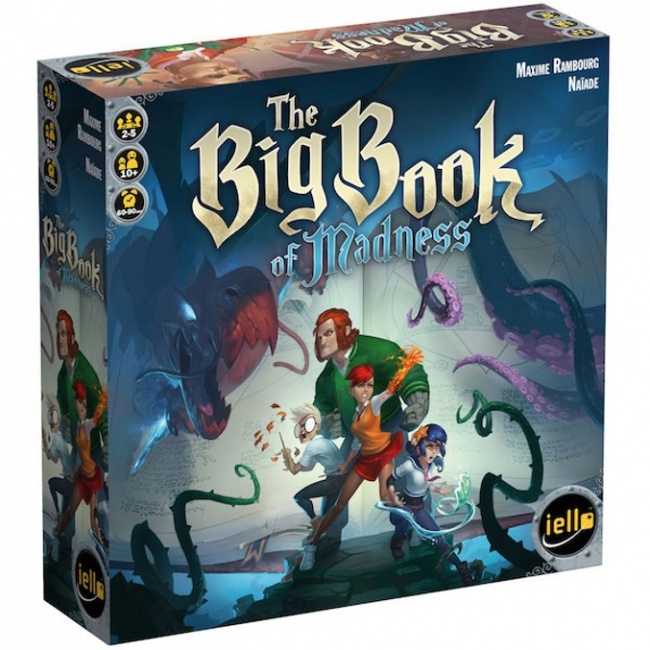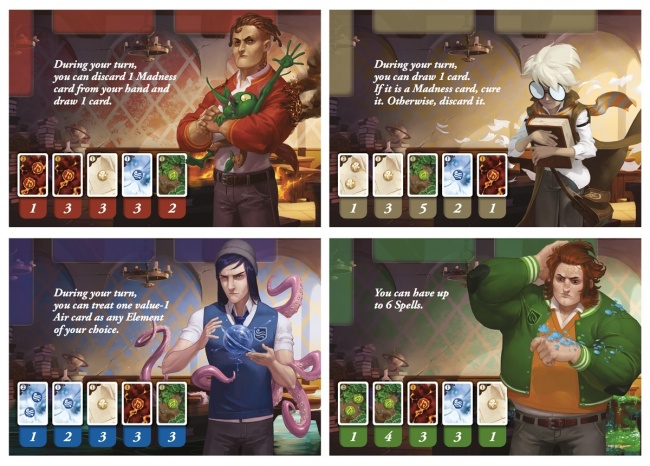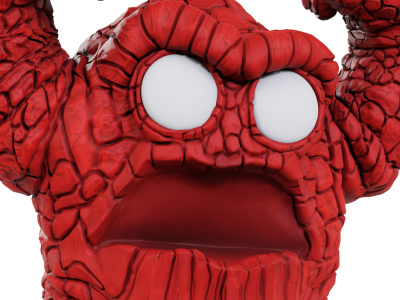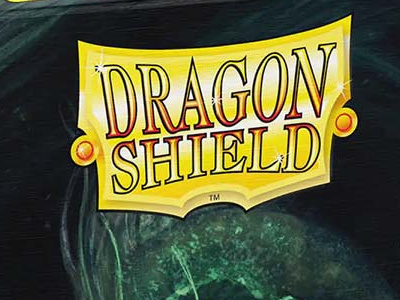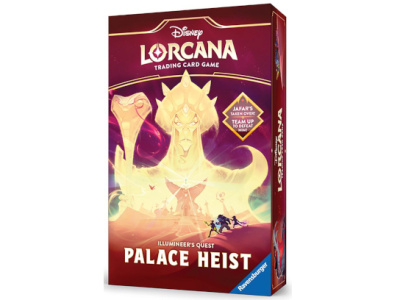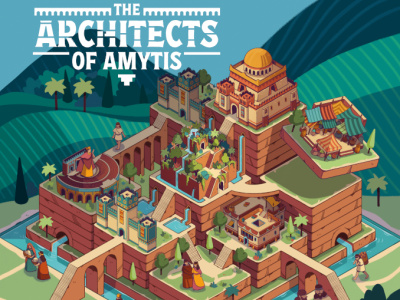The Big Book of Madness
Publisher: Iello
Release Date (US): November, 2015
MSRP: $39.99
Designer: Maxime Rambourg
Players: 2 - 5
Playing Time: 60 to 90 minutes
Product #: 51254
Ages: 12 and up
ICv2 Rating: 4 Stars out of 5
Cooperative games have matured into a full-fledged sub-genre in their own right, and deck-building games are a widely recognized category all their own. Games that combine these two elements are also becoming more common. There is something about this that just “works”, and Iello’s Big Book of Madness is no exception.
Summary: A group of first-year students at the Elementary College grow weary of the slow rate by which the secrets of the universe are being revealed to them, so they sneak into the forbidden library in the dark of night to open The Big Book of Madness - certain that this tome that they were told never to open must contain the secrets they seek. Instead, they find that it’s full of monsters determined to destroy, well, everything! Now they must work together to re-trap the monsters within the book… or go mad trying.
The game uses the now-familiar deck-building mechanic to represent the elemental powers under the control of each player. These elements are used for a variety of tasks, from learning and casting spells, collecting more elements, or, of course, banishing the monsters back into the book. If the players can successfully banish the last monster they win. If they fail, or if they all go mad along the way, the monsters win.
Originality: Since the arrival of Harry Potter, it seems that school-kid magicians saving the universe are running rampant through everything, and deck-building games are remarkably common these days. But that doesn’t mean that The Big Book of Madness doesn’t have some new ideas to offer. The player decks serve both as resource pool, adding a sort of resource-management component to the game, but also as the path to insanity: Use your resources too quickly, and you’ll clog up your deck with too many madness cards. This gain-and-loss balance appears in many places in the game. Learning new spells makes your character more powerful, but you must lose old spells to make space for the new. Negating the monster curses are the key to defeating them, but doing so leaves you fewer resources to confront the next monster. And always the specter of madness lurks, forcing you to divert some of your precious elements to keeping yourself sane.
Presentation: Naiade’s artwork is simply fabulous, with just the right level of cartoony-ness combined with creepiness to evoke the theme of the game. The icons are easy to read and functional (though it is a bit hard to figure out which symbol belongs to which element at first). The rules are clearly written and lavishly illustrated. The box is well-designed and communicates the idea of the game well, in both images and text. I particularly like the way that the “book” itself is built for the game. Before the game begins, you assemble the book with front and back covers and random pages within, using cards made to look like pages with monsters bursting out to menace the players. As a gamer, I really appreciate little details like this.
One little quibble though: Neither the characters nor the monsters have names. I found that this made it just a little bit harder to feel fully immersed in the game. I never felt that I was fighting a “sorcerer” or “dragon” or even a “tentacled thing” with my heroic mage-wannabe. Instead, it was always “the monster” and “the guy”. I small detail, true, but I think that it would have made the game experience much richer to have more “flavor” sprinkled in.
Quality: The game components are excellent. The board is small, unfortunately not offering spaces for everything, but it is sturdy, beautiful, and very functional. The cards are good and stand up well to the heavy shuffling that a deck-builder requires. Cardboard tokens are thick and strong. And a special tip-of-the-hat to the fabulous wooden “book” token - it’s really very cool.
Marketability: Iello has, once again, put together a very clever little game with an engaging and well-integrated theme and packaged with amazing artwork and graphics, all at a reasonable price. There are, however, a lot of gamers who find the concept of cooperative games to be anathema, and that along is going to limit The Big Book of Madness’ reach.
Overall: I very much enjoyed The Big Book of Madness. I found the theme engaging, the artwork endearing, and the decisions I had to make interesting. Success was highly dependent on working together with the other players, so there was a lot of player interaction. I wanted to play it again immediately after my first play, and I could easily see playing it more in the future. Thanks to a huge selection of curses and a variety of monsters, this game offers a lot of variability, and that means excellent replayability.
The game was tense throughout, but after a play or two, however, I was concerned that the game might be “too easy” to beat. But no reason to worry: there are five tougher levels of difficulty that can make the game more challenging - and this means that the first few plays aren’t so frustrating that you don’t want to keep playing long enough to really learn how to play.
Fans of cooperative games definitely should not be afraid to open The Big Book of Madness. You might go insane trying to beat the monsters inside, but you’ll have fun doing it. I give this game 4 out of 5.
--William Niebling
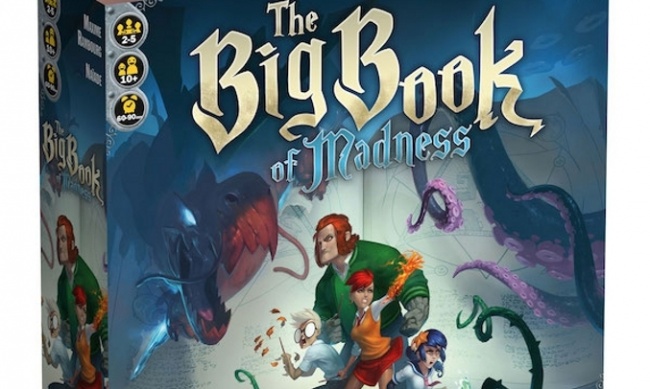
ICv2 Stars: 4 (out of 5)
Posted by William Niebling on November 4, 2015 @ 3:47 pm CT
MORE GAMES
Figure Available to Retailers with Purchases of 'Strange Tales' Booster Bricks
July 2, 2025
WizKids will release Marvel HeroClix: Strange Tales - Orrgo, the Unconquerable , a new figure, into retail.
'Pastels: Blossom' and 'Pastels: Gooseberry'
July 2, 2025
Arcane Tinmen will release new Dragon Shield Matte Dual Sleeves into retail.
MORE REVIEWS
ICv2 Stars: 3.5 (out of 5)
June 20, 2025
Check out the review of Disney Lorcana TCG: Illumineer's Quest - Palace Heist, from Ravensburger.
ICv2 Stars: 3 (out of 5)
May 16, 2025
Here's a review of the board game The Architects of Amytis.



